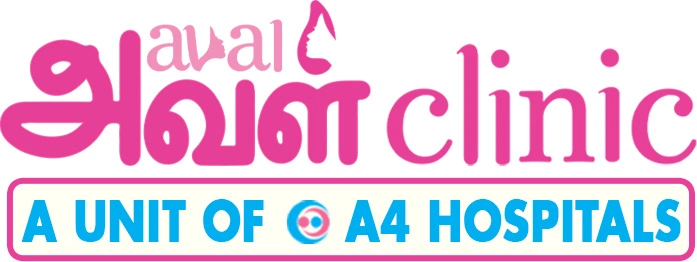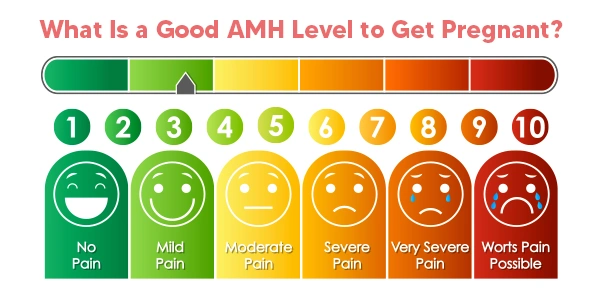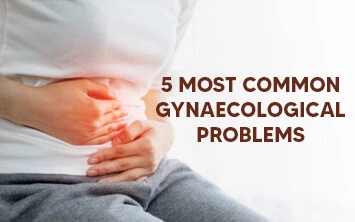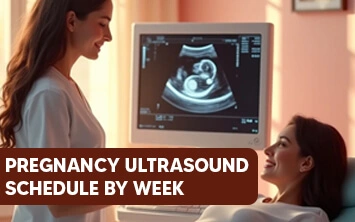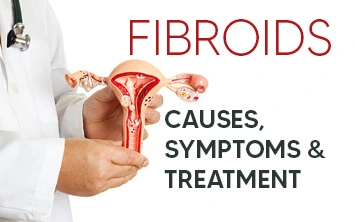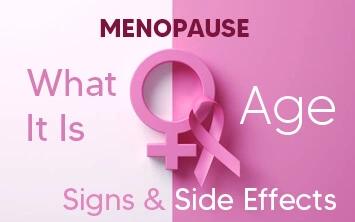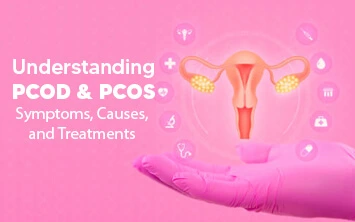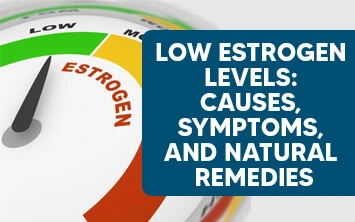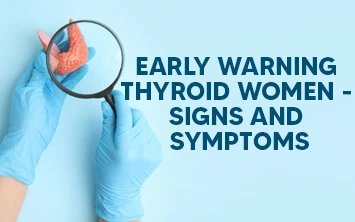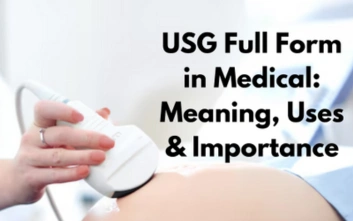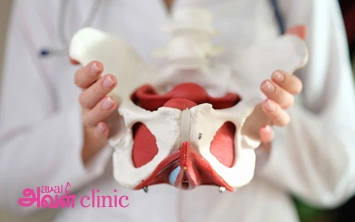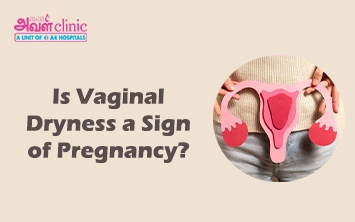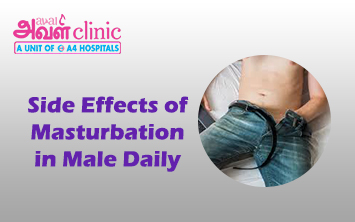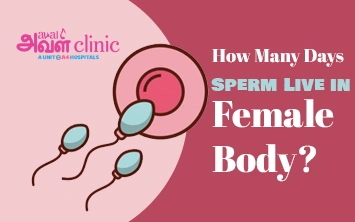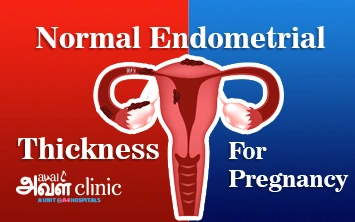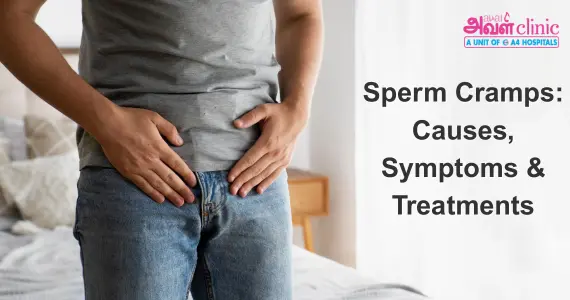Published on: May 20, 2025
Author: Admin
The abbreviation for Anti-Mullerian Hormone is AMH. The hormone can be considered as one of the significant factors when it comes to fertility. In simple terms, AMH is a protein secreted by the ovaries, which defines the ovarian reserve. These ovarian reserves are analysed through the AMH test, which is generally prescribed by the healthcare provider.
Ovarian reserve is nothing but the quality and quantity of eggs existing in a woman’s ovaries. It significantly describes the woman’s fertility potential. This determination is made by the AMH test. When the results show higher levels of AMH, it is a clear indication of having better chances of getting pregnant. The test is commonly used in fertility treatments like in vitro fertilisation (IVF). This helps the healthcare provider to predict the woman’s response to such treatments.
Let’s see what is a good AMH level to get pregnant and available treatment options for low AMH.
What Is A Good Amh Level To Get Pregnant?
A good AMH level to get pregnant is usually between 1.0 and 4.0 ng/mL. This means your ovaries likely have a healthy number of eggs, which helps with fertility.
The higher AMH levels may signify a better ovarian reserve. This is simply associated with the chances of getting pregnant, particularly through IVF.
Note that determining the levels of AMH is just one of the key factors in fertility assessment.
Amh Levels By Age
The quantity as well as the quality of the eggs may tend to decline as a woman ages. This can crucially impact her ability to get pregnant.
The following is a tabular column of average AMH levels by age in a woman.
| Age | Value (ng/mL) | AMH Hormone | Interpretation |
|---|---|---|---|
| 20-25 | 4.23 | High | Optimal fertility |
| 26-30 | 3.48 | Normal | Optimal fertility |
| 31-35 | 2.43 | Normal low | Satisfactory fertility |
| 36-40 | 1.28 | Low | Low fertility |
| 41-45 | 0.52 | Very low | Very low fertility |
Some women may have higher levels of AMH than 4 ng/mL. This can possibly signify the presence of polycystic ovarian syndrome (PCOS). However, to confirm the condition, other diagnostic procedures and symptoms may be required.
What Is A Good Amh Level For Ivf?
During IVF treatment, some couples might wonder what is a good amh level for ivf.
The best AMH levels for IVF may usually range between 1.0 and 3.0 ng/mL. These levels may signify a good ovarian reserve, an increased possibility of retrieving multiple eggs, and an improved response to ovarian stimulation.
Reasons Why Some Women Have Low AMH Levels
There are several factors that affect the AMH levels of women. It is a well-known fact that age is a significant reason. While other reasons like autoimmune disorders, genetic factors, lifestyle choices and more may negatively impact the AMH levels and ovarian reserve.
Age
Age is the essential factor for diminishing the AMH levels, which tend to decline as women age. This, in turn, contributes to decreasing their ovarian reserve. In general, younger woman has higher levels of AMH than elder women. This decline may continue until they reach menopause.
Autoimmune Disorders
Various autoimmune disorders like rheumatoid arthritis, type 1 diabetes, thyroid disease, lupus and more are potentially associated with affecting the AMH levels. Decreased levels of AMH can signify a diminished ovarian reserve.
Genetic Factors
Genetic factors can significantly contribute to negatively influencing the AMH levels and fertility. Some women may be born with certain genetic disorders that accelerate the ageing than usual. This leads to depletion in the ovarian reserve prematurely and a lower AMH value for pregnancy. All these factors contribute to the difficulty of conceiving.
Medical Treatments
Medications like birth control pills and metformin can exhibit a negative impact on the AMH levels. In addition, treatments like radiation therapy and chemotherapy can also disrupt the normal functioning of the ovaries and impact AMH levels. This, in turn, leads to depletion of the ovarian reserve.
Surgical Procedures
Certain surgical procedures involving either the ovaries or the uterus may negatively influence the AMH normal level and fertility. Surgery like laparoscopic ovarian cystectomy, is well-known for decreasing the AMH levels. Experts claim that the change can be seen immediately after the procedure. Whereas, oophorectomy surgery may also contribute to decreasing the levels of AMH.
Uterine Conditions
Uterine conditions like endometriosis, adenomyosis, fibroids, and polycystic ovary syndrome (PCOS) may exhibit a negative impact on the AMH levels. This, in turn, leads to depletion of the ovarian reserve.
Premature Ovarian Failure (POF)
Premature ovarian failure (POF) is the ovarian condition that causes the ovaries to stop functioning properly before 40 years age of. This leads to premature menopausal symptoms and potential infertility in women. In addition, the condition involves extremely low AMH levels beyond their age. This, in turn, leads to depletion of the ovarian reserve and increased production of follicle-stimulating hormone (FSH).
Environmental Factors
Environmental factors like air pollution and other pollutants are directly associated with decreasing the AMH test normal range. Air pollution, like nitrogen oxides, exposure to particulate matter, and smoke from wood burning, can contribute to the depletion of ovarian reserve.
In addition, exposing yourself to certain chemicals like formaldehyde can potentially affect the AMH levels. Ultraviolet (UV) radiation and extreme traffic noise can also impact the AMH levels.
Lifestyle Factors
Several lifestyle factors may significantly influence the AMH levels in a woman. Unhealthy lifestyle choices like stress, poor dietary habits, lack of physical activities, alcohol consumption and smoking can negatively influence the AMH levels.
Treatment Options for Low AMH Levels
For many women with a lower level of AMH, fertility treatments are the right option. These fertility treatments can predominantly enhance the successful conception. Your fertility specialist may suggest the most appropriate option based on your specific circumstances and situations.
Listed below are some of the treatment options to achieve successful conception.
In Vitro Fertilisation (IVF)
Even though IVF can be the right choice for the woman with low AMH levels, the treatment might exhibit minimized success rates than women with normal AMH. IVF is helpful for increasing the chances of successful conception as the process involves:
- Controlled fertilisation right from stimulating the ovaries to transferring the most viable embryos into the uterus.
- Personalised hormone protocols to tailor hormone stimulation based on each individual’s response. The technique is characterised to boost the egg’s quality and success rates.
- Ovarian rejuvenation improves the functioning of the ovaries by allowing them to produce more and healthier eggs. This is done as the technique involves stem cell therapy or platelet-rich plasma (PRP).
- Dual stimulation to increase the number of eggs collected in the treatment. This is done as the process involves two egg collections and two ovarian stimulations within the same month.
- GnRH Antagonists to enhance the success rates. This is done as it involves controlling the premature ovulation. This contributes to the development of mature eggs, significantly improving success rates.
Intrauterine Insemination (IUI)
Intrauterine insemination can be an affordable option for a woman with low AMH levels. The treatment might be less effective when compared to IVF. However, it increases the chances by refining the sperm concentration and directly pushing them into the uterus.
To further enhance the chances of pregnancy, your fertility specialist may combine the procedure with ovulation induction. IUI is helpful for increasing the success rates as the process involves:
- Direct sperm placement, which enhances the fertilisation as the process involves inserting the concentrated sperm near the eggs.
- Controlled ovulation is done by stimulating the release through medications. This ensures the most appropriate time to inseminate the concentrated sperm for higher success rates.
- Combined with Gonadotropins to enhance the success rates. This is done as it involves controlling the premature ovulation. This contributes to the development of mature eggs, significantly improving success rates.
Donor Eggs
Your fertility specialist may suggest the donor egg option only after confirming that your AMH levels are extremely low. This may typically indicate that the woman has a very poor ovarian reserve. This means a very few eggs are produced by the woman’s ovaries. Furthermore, its quality is also extremely compromised. In such cases, the chances of conception are undoubtedly minimal. Considering to choose the donor egg option can significantly enhance the success rates.
Summary
Determining normal AMH levels in females can certainly help to recognise their potential for being fertile. Even though the low AMH levels can imply your poor ovarian reserve, you can still achieve conception through fertility treatments like IVF. Keeping yourself informed of your reproductive health, especially AMH levels, can help with choosing the right option for better outcomes.
